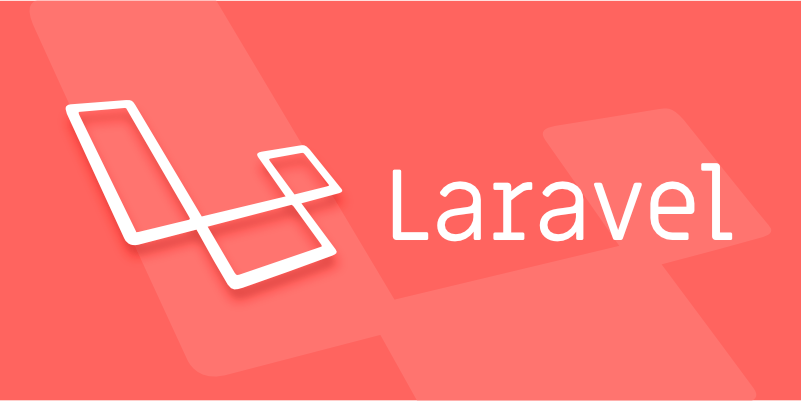Model factories are used in Laravel to quickly generate test data to improve development efficiency and test quality. It defines model data generation rules, allowing developers to quickly create test data that meets their needs. The steps to use include: 1. Generate the factory class through the Artisan command; 2. Define the field value in the definition() method; 3. Call factory to create data in the test or seeder; 4. Optionally define the state to temporarily modify the field value. Its advantages are to reduce duplicate code, generate real data, facilitate test boundary conditions, facilitate maintenance, and are suitable for unit testing, database filling, demonstration environment and debugging functions.

Laravel's model factories are a mechanism for quickly generating test data. Their main function is to help developers generate simulated data for database models during development or testing, especially when running test cases or populating databases.

What is Model Factory?
Simply put, model factory is a class that defines how to generate fake data for a model. It tells Laravel what default values should be populated when you need to create a model instance.
For example, if you have a User model, you can define the default username, email, password and other field values in the corresponding UserFactory . In this way, when you need a user in your test, just call User::factory()->create() and Laravel will automatically insert a piece of data that matches the rules you defined.

How to create and use Model Factory?
Using model factory in Laravel is divided into several steps:
-
Generate Factory Class
You can create a factory through the Artisan command:
php artisan make:factory UserFactory --model=User
Define field values
In the generated factory class, you will see adefinition()method. Here you can define the generation rules for each field. For example:'name' => fake()->name(), 'email' => fake()->unique()->safeEmail(), 'password' => bcrypt('password'),
Call Factory to create data
In tests or seeders, you can use it directly:User::factory()->create(); // Create one data User::factory(5)->create(); // Create five data
You can also define "state" in the factory to temporarily modify the values of certain fields, such as:
public function admin()
{
return $this->state([
'is_admin' => true,
]);
}Then when calling:
User::factory()->admin()->create();
Why is Model Factory useful?
Reduce duplicate code
Instead of manually writing a bunch ofUser::create([...])every time you test, just call factory.The data is more real
Using theFakerlibrary provided by Laravel, data closer to real scenes can be generated, such as name, address, phone number, etc.Convenient to test boundary situations
Various business scenarios can be simulated by defining different factory states, such as invalid users, administrator users, and users with verified mailboxes.Easy to maintain
If the field structure changes, just modify the definition in factory instead of modifying all test codes.
Common usage scenarios
- Unit Testing : Provides a clean data environment for each test case.
- Database population : Use seeder to quickly fill development environment data.
- Demo environment : When displaying functions, use factory to quickly generate simulated data.
- Debugging function : Quickly create test data during development and avoid manual insertion.
In general, Laravel's model factories are a very practical tool that can greatly improve development efficiency and testing quality. Although it may take a little time to set it up at the beginning, once it is written, it will be very convenient to use later. Basically all that, if you use it too much, you will find that it is really easy.
The above is the detailed content of What are model factories in Laravel?. For more information, please follow other related articles on the PHP Chinese website!

Hot AI Tools

Undress AI Tool
Undress images for free

Undresser.AI Undress
AI-powered app for creating realistic nude photos

AI Clothes Remover
Online AI tool for removing clothes from photos.

Clothoff.io
AI clothes remover

Video Face Swap
Swap faces in any video effortlessly with our completely free AI face swap tool!

Hot Article

Hot Tools

Notepad++7.3.1
Easy-to-use and free code editor

SublimeText3 Chinese version
Chinese version, very easy to use

Zend Studio 13.0.1
Powerful PHP integrated development environment

Dreamweaver CS6
Visual web development tools

SublimeText3 Mac version
God-level code editing software (SublimeText3)
 Working with pivot tables in Laravel Many-to-Many relationships
Jul 07, 2025 am 01:06 AM
Working with pivot tables in Laravel Many-to-Many relationships
Jul 07, 2025 am 01:06 AM
ToworkeffectivelywithpivottablesinLaravel,firstaccesspivotdatausingwithPivot()orwithTimestamps(),thenupdateentrieswithupdateExistingPivot(),managerelationshipsviadetach()andsync(),andusecustompivotmodelswhenneeded.1.UsewithPivot()toincludespecificcol
 Sending different types of notifications with Laravel
Jul 06, 2025 am 12:52 AM
Sending different types of notifications with Laravel
Jul 06, 2025 am 12:52 AM
Laravelprovidesacleanandflexiblewaytosendnotificationsviamultiplechannelslikeemail,SMS,in-appalerts,andpushnotifications.Youdefinenotificationchannelsinthevia()methodofanotificationclass,andimplementspecificmethodsliketoMail(),toDatabase(),ortoVonage
 Understanding Dependency Injection in Laravel?
Jul 05, 2025 am 02:01 AM
Understanding Dependency Injection in Laravel?
Jul 05, 2025 am 02:01 AM
Dependency injection automatically handles class dependencies through service containers in Laravel without manual new objects. Its core is constructor injection and method injection, such as automatically passing in the Request instance in the controller. Laravel parses dependencies through type prompts and recursively creates the required objects. The binding interface and implementation can be used by the service provider to use the bind method, or singleton to bind a singleton. When using it, you need to ensure type prompts, avoid constructor complications, use context bindings with caution, and understand automatic parsing rules. Mastering these can improve code flexibility and maintenance.
 Strategies for optimizing Laravel application performance
Jul 09, 2025 am 03:00 AM
Strategies for optimizing Laravel application performance
Jul 09, 2025 am 03:00 AM
Laravel performance optimization can improve application efficiency through four core directions. 1. Use the cache mechanism to reduce duplicate queries, store infrequently changing data through Cache::remember() and other methods to reduce database access frequency; 2. Optimize database from the model to query statements, avoid N 1 queries, specifying field queries, adding indexes, paging processing and reading and writing separation, and reduce bottlenecks; 3. Use time-consuming operations such as email sending and file exporting to queue asynchronous processing, use Supervisor to manage workers and set up retry mechanisms; 4. Use middleware and service providers reasonably to avoid complex logic and unnecessary initialization code, and delay loading of services to improve startup efficiency.
 Managing database state for testing in Laravel
Jul 13, 2025 am 03:08 AM
Managing database state for testing in Laravel
Jul 13, 2025 am 03:08 AM
Methods to manage database state in Laravel tests include using RefreshDatabase, selective seeding of data, careful use of transactions, and manual cleaning if necessary. 1. Use RefreshDatabasetrait to automatically migrate the database structure to ensure that each test is based on a clean database; 2. Use specific seeds to fill the necessary data and generate dynamic data in combination with the model factory; 3. Use DatabaseTransactionstrait to roll back the test changes, but pay attention to its limitations; 4. Manually truncate the table or reseed the database when it cannot be automatically cleaned. These methods are flexibly selected according to the type of test and environment to ensure the reliability and efficiency of the test.
 Choosing between Laravel Sanctum and Passport for API authentication
Jul 14, 2025 am 02:35 AM
Choosing between Laravel Sanctum and Passport for API authentication
Jul 14, 2025 am 02:35 AM
LaravelSanctum is suitable for simple, lightweight API certifications such as SPA or mobile applications, while Passport is suitable for scenarios where full OAuth2 functionality is required. 1. Sanctum provides token-based authentication, suitable for first-party clients; 2. Passport supports complex processes such as authorization codes and client credentials, suitable for third-party developers to access; 3. Sanctum installation and configuration are simpler and maintenance costs are low; 4. Passport functions are comprehensive but configuration is complex, suitable for platforms that require fine permission control. When selecting, you should determine whether the OAuth2 feature is required based on the project requirements.
 Implementing Database Transactions in Laravel?
Jul 08, 2025 am 01:02 AM
Implementing Database Transactions in Laravel?
Jul 08, 2025 am 01:02 AM
Laravel simplifies database transaction processing with built-in support. 1. Use the DB::transaction() method to automatically commit or rollback operations to ensure data integrity; 2. Support nested transactions and implement them through savepoints, but it is usually recommended to use a single transaction wrapper to avoid complexity; 3. Provide manual control methods such as beginTransaction(), commit() and rollBack(), suitable for scenarios that require more flexible processing; 4. Best practices include keeping transactions short, only using them when necessary, testing failures, and recording rollback information. Rationally choosing transaction management methods can help improve application reliability and performance.
 Handling HTTP Requests and Responses in Laravel.
Jul 16, 2025 am 03:21 AM
Handling HTTP Requests and Responses in Laravel.
Jul 16, 2025 am 03:21 AM
The core of handling HTTP requests and responses in Laravel is to master the acquisition of request data, response return and file upload. 1. When receiving request data, you can inject the Request instance through type prompts and use input() or magic methods to obtain fields, and combine validate() or form request classes for verification; 2. Return response supports strings, views, JSON, responses with status codes and headers and redirect operations; 3. When processing file uploads, you need to use the file() method and store() to store files. Before uploading, you should verify the file type and size, and the storage path can be saved to the database.







